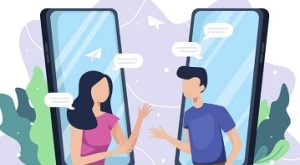Mobile communication has had a significant impact on art and culture in recent years. With the widespread adoption of smartphones and other mobile devices, it is now easier than ever for people to stay connected and share information and ideas with each other. For example, sites like Abonnemang.se, a leading comparison site for mobile phones and mobile subscriptions have emerged to cater for the demand and need. This has then led to the emergence of new forms of artistic expression and cultural practices that are uniquely suited to the digital age.
 One of the most notable ways in which mobile communication has influenced art and culture is through the proliferation of social media platforms. These platforms have given artists and cultural figures a new way to connect with their audiences, share their work, and engage in online discussions about art and culture. For example, many artists now use Instagram and other social media platforms to share their work and interact with their followers. This has made it easier for artists to reach a wider audience and has helped to democratize the art world, making it more accessible to people from all walks of life.
One of the most notable ways in which mobile communication has influenced art and culture is through the proliferation of social media platforms. These platforms have given artists and cultural figures a new way to connect with their audiences, share their work, and engage in online discussions about art and culture. For example, many artists now use Instagram and other social media platforms to share their work and interact with their followers. This has made it easier for artists to reach a wider audience and has helped to democratize the art world, making it more accessible to people from all walks of life.
In addition to social media, mobile communication has also had an impact on the way that people consume and experience art and culture. With the rise of streaming services like Netflix and Spotify, people can now access a wide range of artistic and cultural content from anywhere and at any time. This has made it easier for people to discover and engage with new forms of art and culture, and has helped to break down traditional barriers that may have previously limited access to certain types of content.
Overall, it is clear that mobile communication has had a profound influence on art and culture. It has given artists and cultural figures a new way to connect with their audiences and has made it easier for people to access and experience a wide range of artistic and cultural content. As mobile communication continues to evolve, it will be interesting to see how it continues to shape the way that we engage with art and culture in the future.